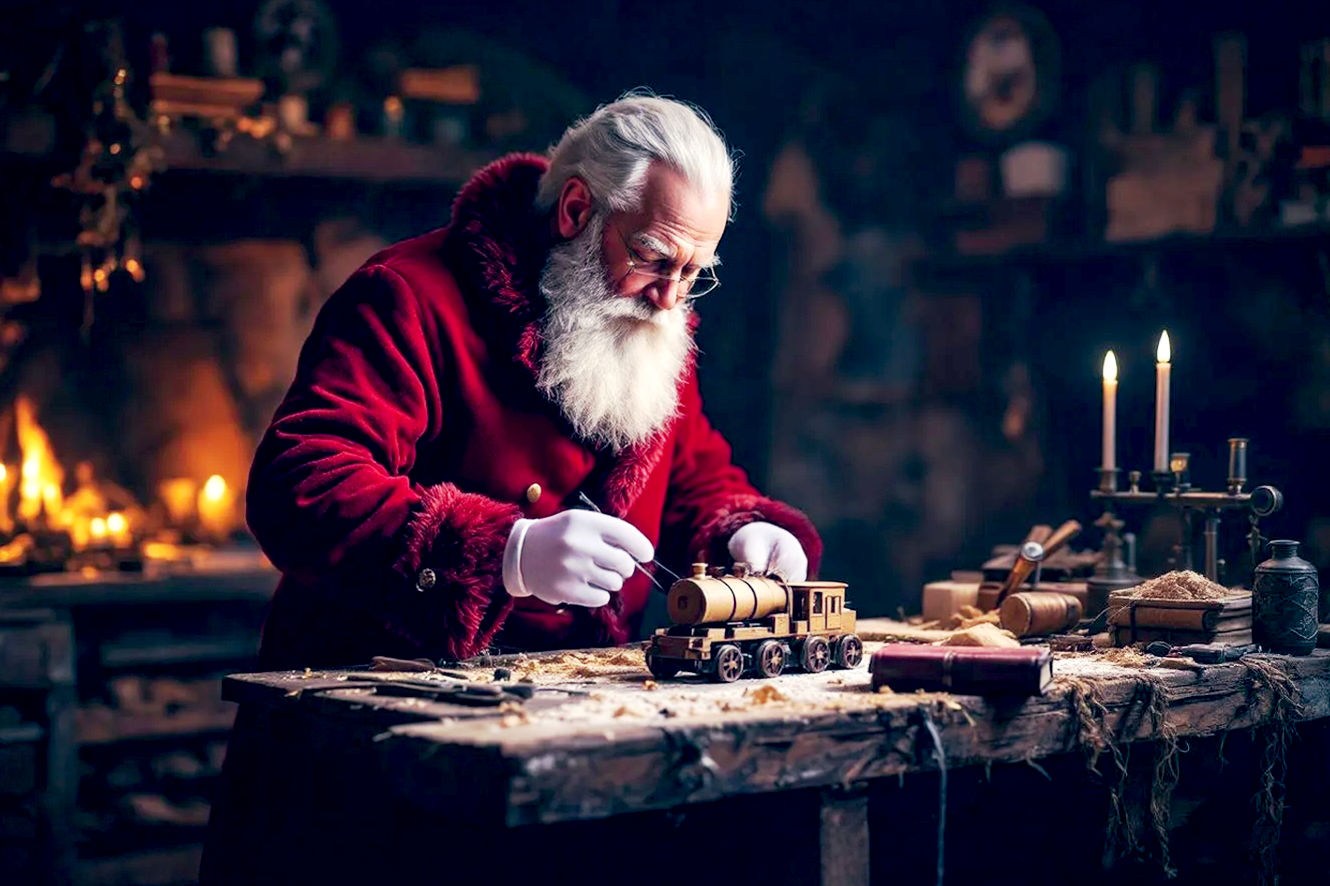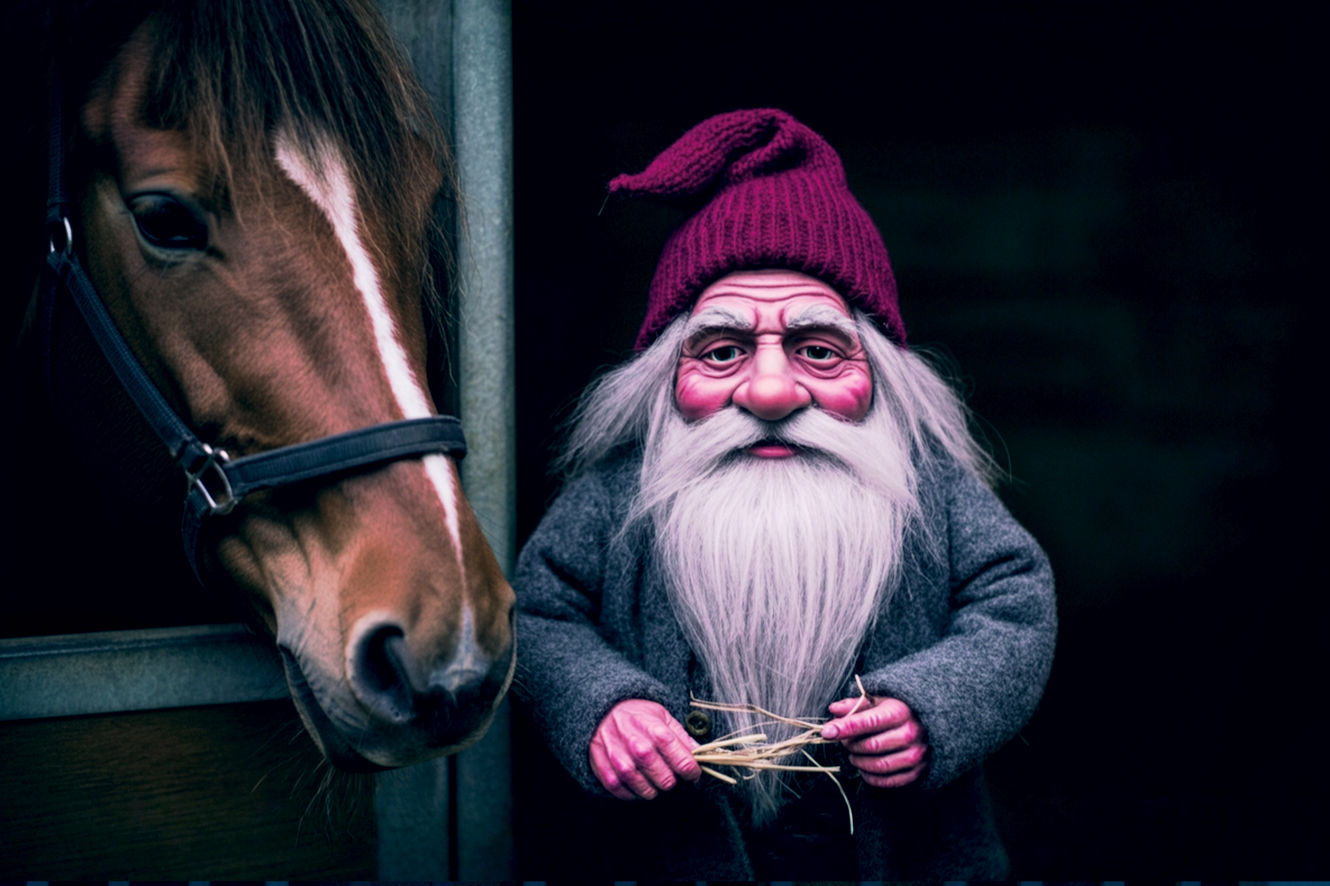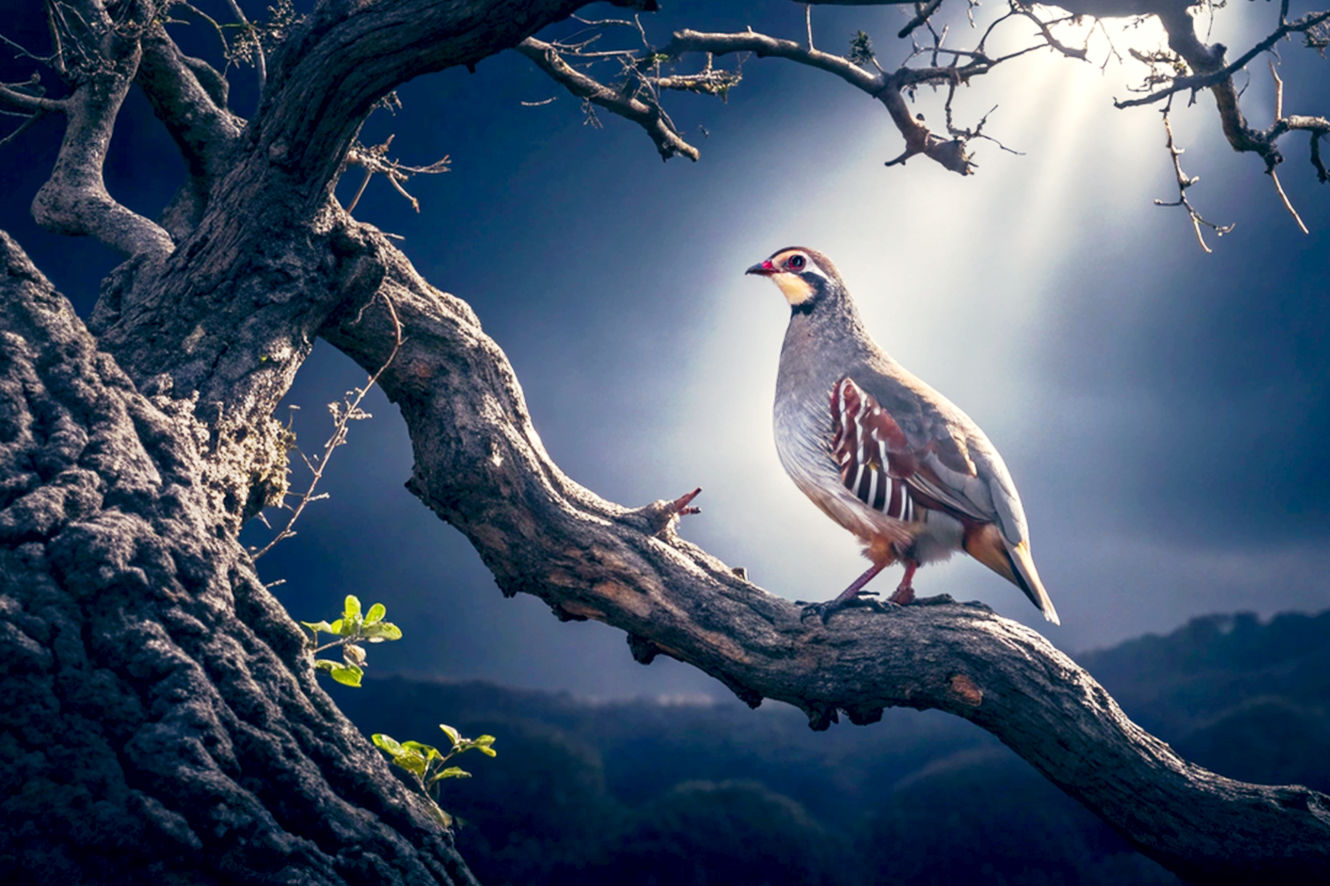This post may contain affiliate links. If you make a purchase through these links, we may earn a commission at no additional cost to you.
For many, the words “Christmas” and “Yuletide” are interchangeable, evoking images of roaring fires, decorated trees, and joyful feasting. But the history behind these two terms is far from the same. One is a Christian holy day celebrating the birth of Jesus Christ, while the other is an ancient pagan festival honoring the longest night of the year and the triumphant return of the sun. The true difference between them isn’t a clear-cut line but rather a fascinating, centuries-long tale of cultural collision, deliberate syncretism, and enduring traditions.
This is the story of how a powerful Christian faith spread across Europe, not by eradicating the old ways entirely, but by cleverly and intentionally absorbing them. It’s a story of a roaring Yule fire becoming a festive centerpiece, a pagan god’s winter ride inspiring a jolly gift-giver, and a solemn winter solstice turning into a joyous twelve-day celebration. To truly understand Christmas as we know it today, you must first understand the ancient, pagan roots of Yuletide.
The Deep Roots of Yuletide: A Festival of Light in the Darkness
To understand Yuletide, you have to step back thousands of years into the cold, dark forests of Northern Europe, long before the arrival of Christianity. For the Germanic and Norse peoples, winter was a time of immense hardship and fear. Crops had been harvested and stored, animals had been slaughtered, and the world was plunged into a seemingly endless twilight. The air was thick with the threat of starvation and the dread of the supernatural, as the gods of the old pantheon, like Odin, rode the skies during a time known as the Wild Hunt.
In this world of uncertainty, the winter solstice was a moment of profound importance. It marked the year’s longest night and shortest day, the very peak of winter’s power. But it also represented the turning point. After this night, the days would begin to grow longer, and the sun—the source of all life—would once again begin its slow, victorious return.
The Yuletide festival, or Jól as it was known in Old Norse, was a celebration of this cosmic victory. It wasn’t a single day but a grand feast that lasted for a full twelve days, beginning on the solstice itself, around December 21st. It was a time to burn away the darkness, honor the gods, and give thanks for survival.
The Lore and Legends of the Winter Solstice
The mythological backdrop for Yuletide was rich and powerful. The god Odin, or Wōden in the Germanic tradition, was central to the solstice lore. During the Wild Hunt, he was said to lead a procession of ghostly hunters across the sky, gathering the souls of the dead. This was a terrifying spectacle, but Yuletide offered a respite from this dread. People would leave offerings of food and drink for Odin and his riders, hoping to appease them and ensure their goodwill.
Another crucial figure was Freyja, the goddess of love, fertility, and battle, who was also honored. The boar was her sacred animal, and the practice of sacrificing a wild boar, known as the sonargöltr, was a central part of the Yuletide feast. The blood was used to hallow the feast, and those in attendance would place their hands on the boar and make a solemn oath to the gods, hoping for a prosperous year to come.
Core Yuletide Traditions and Their Symbolic Meanings
The practices that defined Yuletide were not just festivities; they were deeply symbolic rituals meant to ensure the survival of the community through the harsh winter and into the coming spring.
- The Yule Log: This is perhaps the most iconic Yuletide tradition. A massive log, often the largest in the forest, was carefully selected and brought into the home. It was decorated with ribbons and greenery, and then lit on the solstice night. The log was meant to burn continuously for the full twelve days of the festival, symbolizing the power of the sun and the hope that its light would return. It was believed that the longer the log burned, the better the luck for the coming year. The ashes were then collected and either spread over fields to ensure a good harvest or kept as a charm against lightning and evil spirits.
- Wassailing: The word “wassail” comes from the Old English “wæs hæil,” meaning “be healthy.” This tradition involved going from door to door, singing songs and offering a drink from a large bowl of spiced ale or cider. But its origins were more practical: in some versions, wassailing involved a ceremony in apple orchards, where people would sing and pour ale on the trees to ward off evil spirits and ensure a fruitful harvest in the spring.
- Evergreens: The practice of decorating with evergreens like holly, ivy, and mistletoe was a powerful statement of hope and defiance against winter. In a world of dead and sleeping plants, these evergreens represented life and immortality. They were brought inside to protect the home and to provide a refuge for nature spirits during the cold months. Mistletoe, with its deep Celtic connections, was a particularly revered plant, symbolizing life and fertility.
- The Yule Boar: As mentioned, the boar was a sacred animal. The feasting on the sonargöltr was not merely a meal; it was a religious rite, a communal act of honoring the gods and securing their favor. The boar’s head was often served as a centerpiece, a tradition that evolved into the modern-day serving of ham or roast pork during Christmas.
The Christian Christmas: A New Festival for a New Faith
As Christianity spread across the Roman Empire and beyond, it faced a significant challenge: how to convert people whose lives were already governed by powerful, deeply ingrained seasonal festivals. The Church’s strategy, particularly in its expansion into Northern Europe, wasn’t to forbid these festivals outright. Instead, it was to absorb and transform them.
Early Christians didn’t celebrate the birth of Christ. The Bible doesn’t specify a date, and early church leaders were more focused on the Resurrection. It wasn’t until the 4th century CE that the Church began to settle on a specific date. A pivotal moment came when Pope Julius I declared that December 25th would be the official date for the Nativity. This wasn’t a random choice; it was a masterstroke of religious and political strategy.
The Roman Influence: Saturnalia and Sol Invictus
The Romans had already been celebrating two major festivals in late December. Saturnalia, a rowdy week-long festival, honored the god Saturn and involved gift-giving, gambling, and a temporary reversal of social roles. Sol Invictus, or the “Birthday of the Unconquered Sun,” was a festival dedicated to the Roman sun god, celebrated on December 25th.
By placing Christmas on December 25th, the Church cleverly gave a new, Christian meaning to existing Roman celebrations. People were already in a celebratory mood, feasting and giving gifts. The Church simply reframed the reason for the celebration, replacing the pagan sun god with the Christian “Son of God,” a powerful and easy-to-grasp symbolic parallel.
The Grand Convergence: How Christmas Absorbed Yuletide
The same strategy of assimilation was used as Christianity moved north, where it met the ancient Yuletide traditions head-on. The Church found it far more effective to layer the story of Christ’s birth over the existing framework of the winter festival than to ban the pagan rites entirely. This process of cultural and religious syncretism is the very heart of the modern Christmas holiday.
Here’s a breakdown of how specific Yuletide traditions were seamlessly woven into the fabric of Christmas:
The Yule Log Becomes a Christmas Tradition
The continuous burning of the Yule Log, a symbol of the sun’s return, was effortlessly re-contextualized. In its new form, it became a symbol of warmth and hope, a centerpiece for the Christmas hearth. The twelve days of Yuletide, during which the log burned, became the Twelve Days of Christmas, a period of feasting and celebration beginning on Christmas Day and ending on January 6th, the feast of Epiphany. The act of burning the log was no longer a rite for the pagan gods but a joyous tradition celebrating the warmth of the Christmas season.
Evergreens and Holly Become Christmas Decorations
The ancient pagan belief that evergreens possessed life-giving, protective powers was easily adapted. Holly, ivy, and mistletoe were no longer brought inside to provide shelter for nature spirits, but to decorate the home in honor of Christ’s birth. Holly’s red berries came to symbolize the blood of Christ, and its sharp leaves, the crown of thorns. The green of the leaves represented the promise of eternal life. The Christmas tree itself, a symbol of life and rebirth in Germanic pagan traditions, was eventually adopted and popularized by figures like Queen Victoria and Prince Albert in the 19th century, becoming a universally recognized Christmas icon.
Wassailing Evolves into Christmas Caroling
The raucous, sometimes boisterous, tradition of wassailing was tamed and transformed. The door-to-door songs, once meant to bless orchards and drive away evil, became the more formal and religious practice of Christmas caroling. The songs changed from pagan chants to hymns celebrating the Nativity. The communal aspect of going house-to-house, however, remained a core part of the tradition.
The Yule Boar and Feasting Become the Christmas Feast
The tradition of the grand Yuletide feast was a natural fit for the Christian celebration. The boar’s head, once a sacred offering to the gods, became the magnificent centerpiece of a celebratory meal. Today, the modern Christmas ham or pork roast is a direct descendant of the Yuletide boar. The feasting itself, the communal joy of sharing a meal, transcended its pagan origins to become a universal symbol of gathering and togetherness during the holidays.
Odin’s Wild Hunt and the Origins of Santa Claus
This is one of the most intriguing examples of syncretism. Many scholars and historians point to parallels between the Norse god Odin and the modern figure of Santa Claus. Odin was depicted as a long-bearded, magical figure who rode through the sky on a flying, eight-legged horse named Sleipnir. He was known for leaving gifts (or punishments) for children. When you consider this alongside the Dutch figure of Sinterklaas, who was based on the historical St. Nicholas, the amalgamation becomes clear. The Christian saint was combined with elements of the pagan god to create the modern, jolly, gift-giving figure who flies through the night.
Modern Interpretations and the Resurgence of Yuletide
The relationship between Yuletide and Christmas didn’t end with the Middle Ages. It continued to evolve, particularly during the 19th century. The Victorian Christmas revival, heavily influenced by Charles Dickens’s A Christmas Carol, solidified many of the customs we hold dear today, such as sending Christmas cards, decorating Christmas trees, and a focus on family and charity. This period blended the ancient traditions with a new, sentimental piety, creating a holiday that was both sacred and secular.
Today, the line between Christmas and Yuletide is often blurred in popular culture. Yuletide is commonly used as an archaic or poetic synonym for Christmas. However, the ancient festival is also experiencing a genuine resurgence among modern pagan groups. Wiccans, Heathens, and other nature-based faiths now celebrate the winter solstice, or Yule, as one of their most important holidays. They perform rituals to honor the sun, the land, and the cycle of life, often re-enacting traditions like burning the Yule log, feasting on traditional foods, and decorating with evergreens. For these individuals, Yule is a distinct and separate holiday, not to be confused with the Christian celebration of Christmas.
A Simple Breakdown: The Core Differences
To make the distinction crystal clear, here’s a summary of the fundamental differences between Christmas and Yuletide.
| Feature | Yuletide (The Pagan Festival) | Christmas (The Christian Holiday) |
|---|---|---|
| Origin | Ancient Germanic and Norse pagan winter solstice festival. | Christian holy day celebrating the birth of Jesus Christ. |
| Primary Focus | The winter solstice; the return of the sun and longer days. | The Nativity; the birth of the Son of God. |
| Symbolic Meaning | Rebirth, light overcoming darkness, honoring gods, fertility. | Hope, salvation, redemption, charity, and goodwill. |
| Key Traditions | Burning the Yule Log, wassailing, sacrificing the boar, honoring Odin. | Church services, the Nativity story, Christmas carols, gift-giving. |
| Duration | Traditionally a twelve-day festival beginning on the solstice. | Officially a one-day celebration (December 25th), but part of a larger liturgical season (Advent, Christmas, Epiphany). |
| Modern Practice | Revived by modern pagan faiths as a distinct holiday. | A global holiday with both religious and secular aspects. |
Ultimately, understanding the difference between Christmas and Yuletide is to understand a central truth of human history: cultures rarely disappear overnight. They evolve. They blend. And the traditions of the old ways, born of a need for survival and hope in the darkest of times, often live on in the most unexpected of places—like the warm glow of a roaring fireplace or the cheerful singing of a Christmas carol. The true magic of the modern Christmas is that it carries within its heart the echoes of a pagan festival that celebrated the triumph of light over darkness long before the first Noel was ever sung. It’s a beautiful, complicated, and entirely human story of tradition and transformation.






